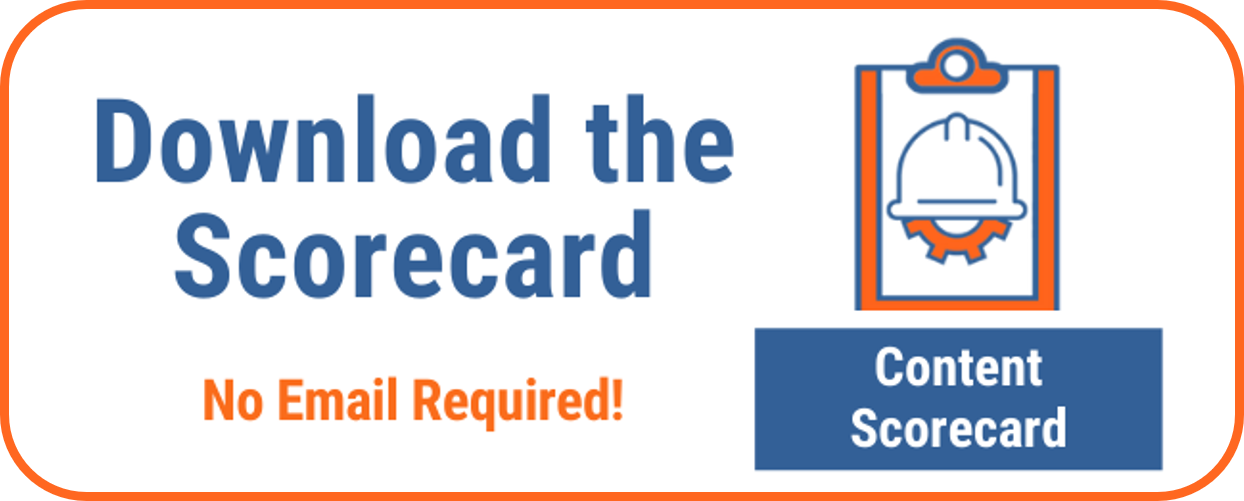Creating a Customer Journey map is about more than just understanding your customer’s buying process. It’s also a great way to frame your keyword research, and prioritize the most important content for search engine optimization.
A Customer Journey is tough for most companies, as they usually can’t get past their own product. When it comes to doing keyword research, they focus only on the topics germane to their product or specific solution.
You need that product focus — absolutely. And you must rank #1 for the keywords most often searched to find it. But many customers don’t know you, your product, or perhaps even that the solution you are offering exists.
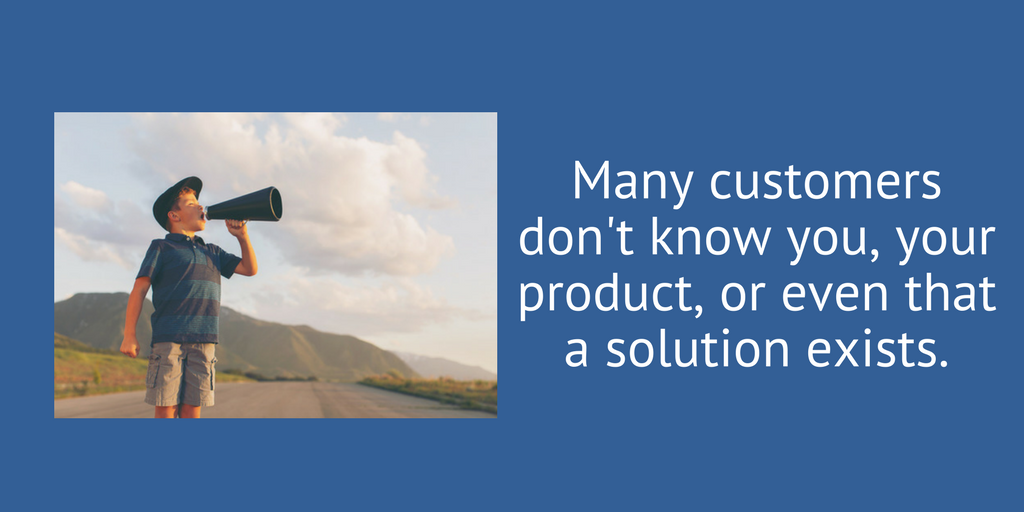
The relationship between you and your customers is a spectrum. You and your product sit on one end, the customer is on the other. The disciplined act of mapping out the steps in between is what can help bridge the gap, exposing you to a much larger audience in the process.
What is Customer Journey mapping?
Customer Journey mapping is the process of identifying the different stages in a customer’s buying cycle — from little or no awareness, to identifying both a problem and a solution, and finally to the purchase and implementation.

Creating a systematic process for mapping the Customer Journey improves your awareness of how your customers think. It also provides a framework for the vast and typically overwhelming world of keywords relevant to your product or service.
Many Customer Journey mapping templates and tools exist. We’re going to explain our approach, which takes you from broad-based topics down to specific keywords.
Customer Journey maps and buyer personas
Before we deep-dive into the process, let’s identify the most important part of this entire exercise: creating an accurate, research-based customer persona.
Anyone who has embarked on content marketing knows the importance of creating a customer persona. You need to create a persona of your ideal customer, and document the qualitative lifestyle habits that will trigger content ideas.
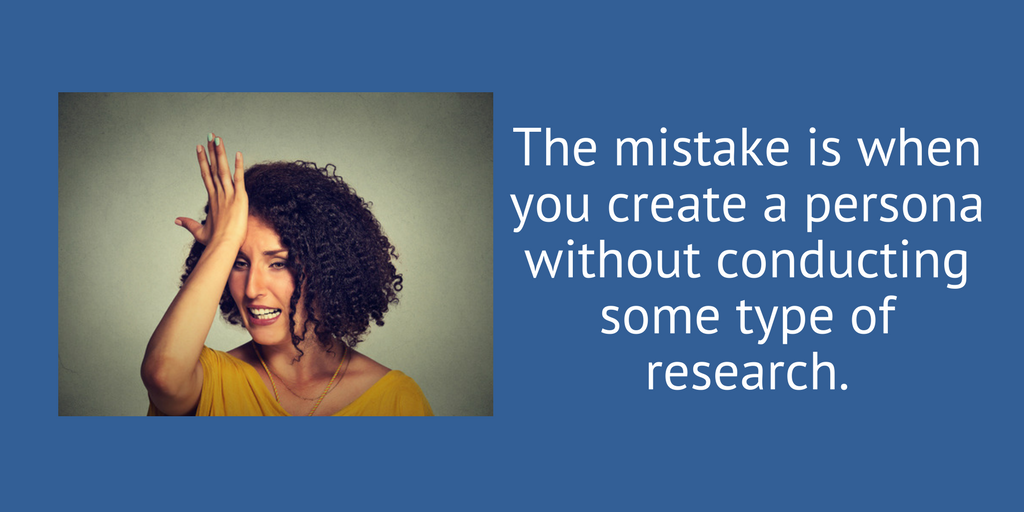
I don’t disagree with this in the least. The problem — and where we’ve misstepped ourselves in the past — is assuming you can write these personas without conducting some type of research and actually talking (via survey, focus group or one-on-one interview) with actual people.
How we biffed in our own Customer Journey mapping process
Our company, Winbound, provides content marketing and conversion optimization services for small marketing departments. It’s a unique, all-in-one service, specifically designed for small marketing departments.
When we first created our persona for directors of small marketing departments, I assumed they’d considered content marketing as part of their overall strategy. Yet when I interviewed a number of them, they didn’t even mention content marketing.
Their challenges were in a variety of different areas — many of which I knew could be solved by effective content marketing. If I was going to reach them, however, I needed to discuss the issues that were most pressing to them, and meet them at the first stage of the Customer Journey.
The bottom line: Don’t proceed to the Customer Journey mapping process when you’ve created a buyer persona using only your own input. You’re too biased. As noted in this great post on Conversion XL:
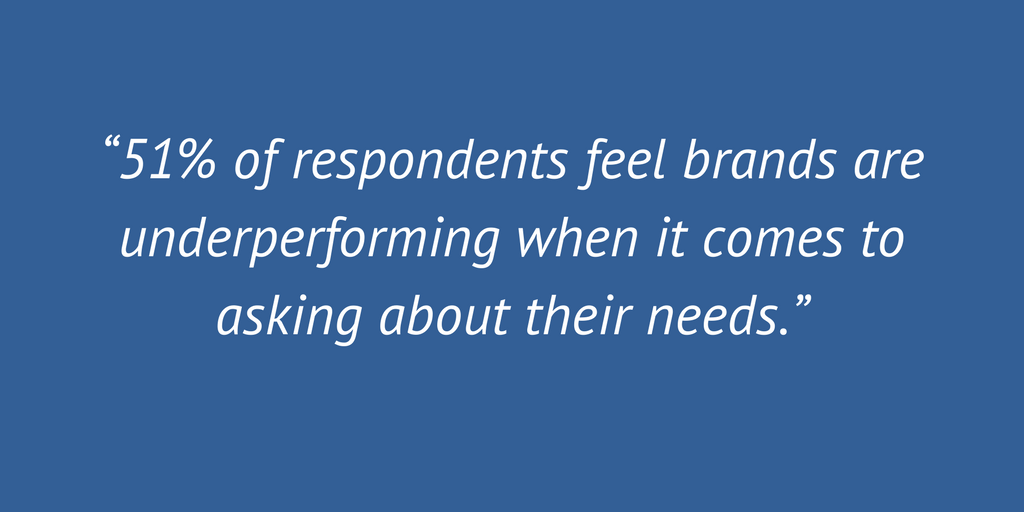
Use a Customer Journey map template
Once you have your buyer persona researched and created, it’s time to move on to the Customer Journey mapping process.
Any Internet search will reveal a boatload of Customer Journey maps. We’ve pulled from many of those to create our own, which is illustrated here:
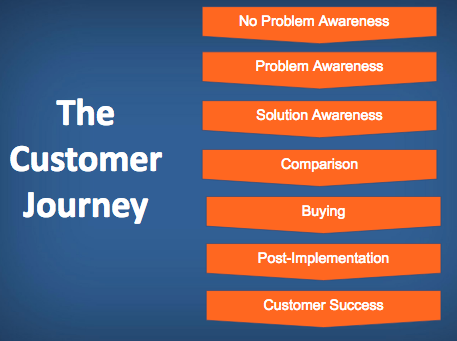
Now let’s take a look at each stage of the Customer Journey. At each stage, we’ll include:
- An explanation of the stage
- Example keywords and content
- Goals and metrics
We will base this Customer Journey on the following product: Bob’s Shark Repellent. Our persona is Helicopter Parents of Young Children.
Customer Journey Stage 1: No Problem Awareness
Explanation:
At the beginning of the Customer Journey, the customer usually doesn’t even know you exist. Why should they? They’re busy, wrapped up in their own lives and jobs — especially the helicopter parents (aka doting parents) of young children.
Parents at the No Problem Awareness stage are not even aware that shark repellent is an option, so you need to reach them with a related topic.
Example Keywords and Content:
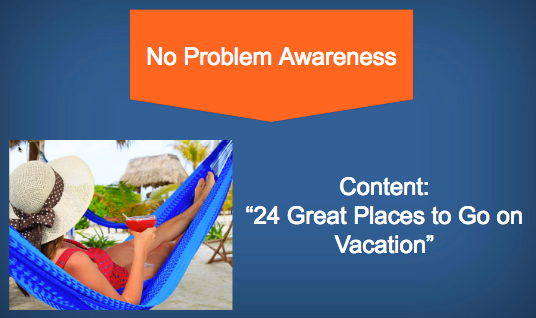
Our research revealed that parents at this stage are very safety conscious, and we want to reach those that are traveling, specifically to oceans.
We conduct keyword research based on this stage, and find that “Great places to go on vacation” is a long tail keyword with high traffic volume. So we create a piece of content, in this case a blog post, entitled “24 Great Places to Go on Vacation.”
To make it more credible and useful for parents, we interview a leading expert on safe vacation spots, and feature a pull quote in the content (you always want to collaborate on content).
Goals:
Awareness: Our persona is looking for a safe place to vacation. Let’s start by appealing to that need, and within the content introduce potential issues — including shark attack.
Branding: Our persona isn’t aware we exist. Let’s get on their radar and introduce them to our company in the process.
List Building: To build our subscriber list, we include a highly-visible call to action in the blog post, encouraging readers to sign up for a newsletter that will deliver ongoing updates on safe, unique and fun activities for families.
Link Building: We want other content producers to link to this page, as inbound links improve our overall domain authority and help us rank high on Google for keywords further down the funnel. So we’ll recruit expert collaborators, or produce our own research to help this post rank.
Traffic: Obviously, we need to get more people to our site, so if we can rank for this long tail keyword, we’ll start driving traffic to it — even if the visitor isn’t ready to buy at this stage.
Important: People who read this post may never buy. But as long as we get inbound links, further down the line that can help our buying pages rank higher. To understand how this works, check out this post on “Explaining to Your Boss How Content Marketing Works.”
Metrics:
- Traffic
- Blog subscriptions
- New links
Customer Journey Stage 2: Problem – Solution Awareness Stage
Explanation:
It should be noted that any customer can join into the Customer Journey at any point. You just need relevant content ready and waiting for them as they make their way through.
Our next two stages — which tend to overlap — are the problem and solution awareness stages.
Buyers at the Problem Awareness stage realize that shark attacks are a threat. Someone who has Solution Awareness not only knows about shark attacks, they realize that shark repellents could solve the problem.
Example Keywords and Content:

Problem Awareness: Our keyword research for the problem awareness stage reveals that “shark attack” gets high volume. We then create a piece of content that makes people aware of a problem. “24 Ways Shark Attack Can Ruin Your Vacation.”

Solution Awareness: While we want our buying page to rank #1 for “Shark repellent,” we can use it here with a long tail keyword, “How shark repellent works.” Our content will then be tweaked to integrate the keyword and appeal to the persona: “How Shark Repellent Works and Prevents a Gruesome Death.”
Goals:
At this stage, we’re still building up inbound links and new blog subscribers, but we also want to move them down the buying journey. So we might link from the problem awareness post to the solution awareness post, for example.
We also always want to give people an opportunity to buy, as everyone’s content journey is different. Our case might be so compelling that they might want to buy right away.
Metrics:
- Traffic
- Blog subscriptions
- Click-through to next stage content
- Click-through to buying page
Customer Journey Stage 3: Comparison
Explanation:
At this point, a customer is comparison shopping. They’re researching how your shark repellent compares to other shark repellents. And so you want to be there with a comparison piece, even comparing yourself to the competition.
Absolute honesty can be your friend here, and further endear you to your target market. I’ve seen HubSpot compare itself side-by-side to Marketo, for example, and give props to Marketo in areas where they shine. In the process, HubSpot also illustrated its strength to its respective target market.
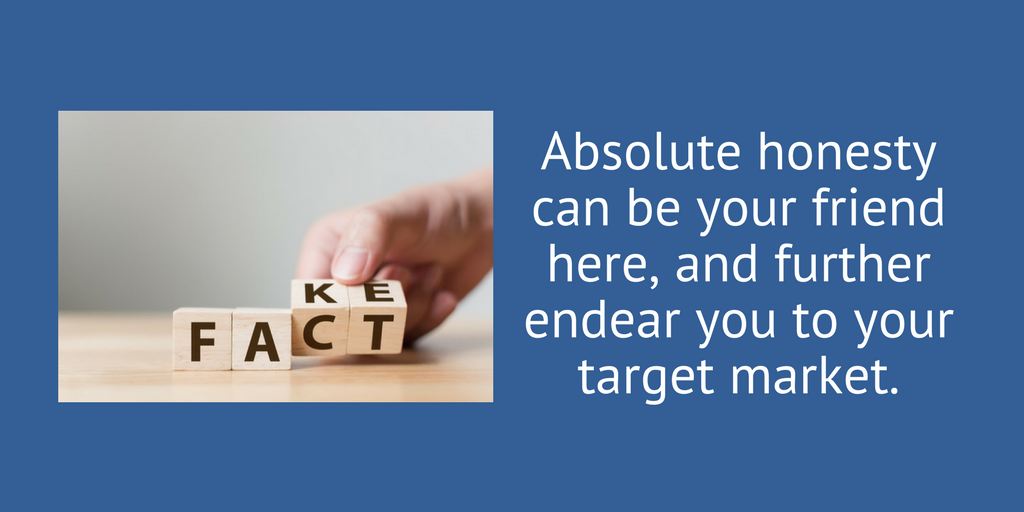
Example Keywords and Content:
If you don’t have a strong brand name yet, a comparison keyword might be “Best types of shark repellent.” If there are variations of shark repellent, it might result in a comparison such as “Deep sea shark repellent vs. kid-friendly shark repellent.”
Content in these cases is best displayed in a graphic, such as a table, with a side-by-side comparison.
Goals:
Buyers who reach this comparison stage are probably going to make a purchase soon, so you really want them to take that next step by going to your buying page. Use a bold call to action, and include an incentive to click through (25% off shark repellent!). These folks are primed for action!
Metrics:
- Click-through to buying page
Customer Journey Stage 4: Buying
Explanation:
Finally, your website visitor has reached the Promised Land – the Buying stage. You’ve been answering questions, providing great product details, and making an open-and-shut case for Bob’s Shark Repellent.
Now it’s up your direct marketers to close the deal, with a killer landing page and an absolutely seamless e-commerce checkout.
Example Keywords and Content:
As we mentioned, your content here should be all about buying. At the No Problem and Problem Awareness/Solution Awareness stages, your content was more informative. Now it’s time to make your case for the purchase.
Don’t go it alone, however. Use customer testimonials, data, and social proof to really back up your product or service.
Naturally, you’ll be optimizing for “shark repellent,” but your keyword research may indicate variations on the term and other semantic keywords that can help you rank.
Goals:
Conversions: Without a doubt, this is what it’s all about! You can track conversions either through forms or phone calls, but this is the absolute goal of this page.
Metrics:
- Conversions
Customer Journey Stage 5: Implementation and Customer Success
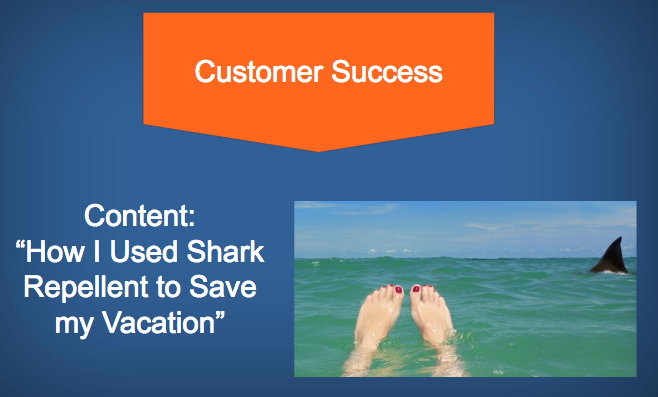
Post-buy, the Customer Journey continues with Implementation, in which you can deliver great content on how to use Bob’s Shark Repellent (shield the eyes, apply before donning your swimsuit). You can also beef up your social proof by harvesting customer success stories.
Goals:
Reduce phone calls and other support requests: Content can continue to help your new customers, even after they’ve made a purchase. Ensure your customers stay long-term customers by providing exceptional implementation content, such as “How do I….” posts. Make it easy for buyers to use your product or service to their best advantage by answering their questions.
This can also reduce your support costs, as questions answered seamlessly via your content will eliminate calls and emails from confused customers.
Metrics:
- Reduced support calls, requests for help and customer service costs
How to research keywords throughout the Customer Journey
Now that we’ve walked through the Customer Journey, you can see a gold mine of opportunities to unearth keywords and blog topics. There are endless possibilities in terms of content.
A variety of keyword research tools (our favorite is SEMrush) and methodologies exist for finding these keywords (which will be the subject of our next blog post — so be sure to subscribe to the Winbound blog to get it).
However, we recommend you consider four important approaches to finding the right keywords:
Review Your Existing Content
If you’ve already generated quite a bit of content, map out your existing content based on which stage of the Customer Journey it addresses. You may find that you’re overloaded with content related to the Problem stage, but light in the Solution stage. That can help you diagnose what you should focus on in the upcoming year when generating content.
Pro tip: You have tremendous opportunities here to combine old pieces of content into one, extensive piece. We combined four, low-performing articles for one client into a 2,500-word behemoth, using key points covered by each individual piece. Together, they provided the substance to vault the content and up the keyword rankings.
Brainstorm Topics
Get your team together and brainstorm topics throughout the Customer Journey. These will likely be broad-based topics with high search volume (Shark attack, Safety at the beach). Once you have a big list, you can use a tool such as SEMrush to drill down and discover other keywords, identifying potential opportunities.
Research Competitor Keywords
Don’t do all the heavy lifting yourself. Research your competition with a keyword research tool, and find out which keywords they rank for. You may find opportunities you’ve overlooked.
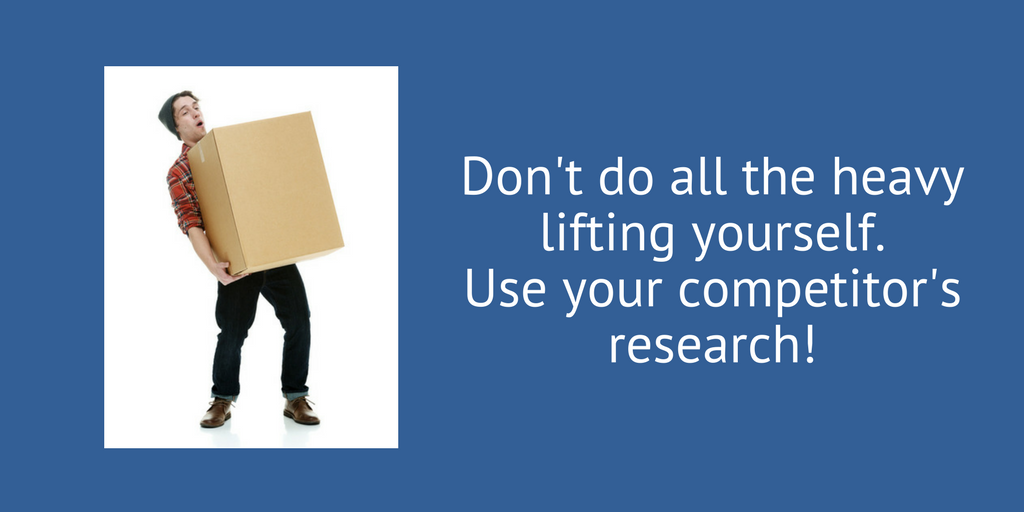
For example, one of our clients was completely focused on “positive” keywords, overlooking all the negative keywords associated with their product. (There was a lot of conflicting — and often incorrect — data regarding their product.) They were missing a golden opportunity to provide a counterpoint.
Research Long Tail Keywords
These are great places to find low-hanging fruit — keywords that often don’t have much competition, that eventually you can rank for.
A lot of these will be identified as you drill down into your topics. But there are methods to find related long tail keywords. We’ve identified some tactics in the post, “How to update website content and improve keyword rankings.”
An eye-opening experience for marketers and business owners alike
Plotting a Customer Journey is a highly-disciplined, sometimes grueling exercise in really diving into the content on your site and the content you need to create. It’s an opportunity to stop selling long enough to think deeply about what actually motivates your customers to buy.
In the end, you’ll see the Customer Journey is also a Marketer’s Journey. Start yours now.
Find out how your content and conversion ranks with our interactive version of the Content Scorecard you can fill in yourself – no email required for download.

